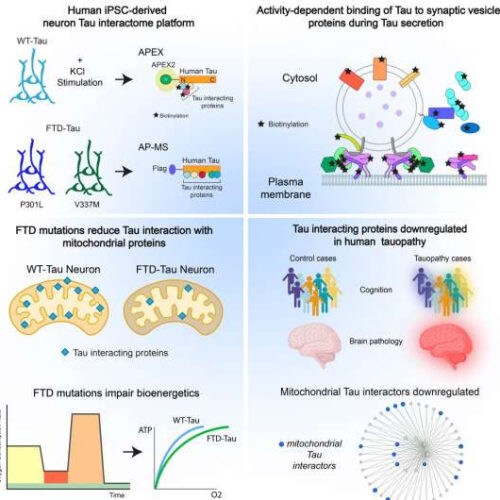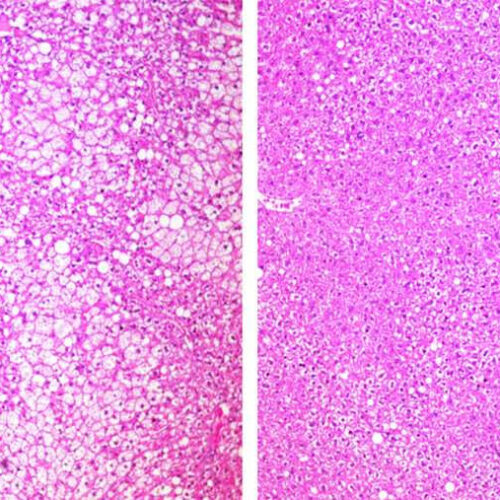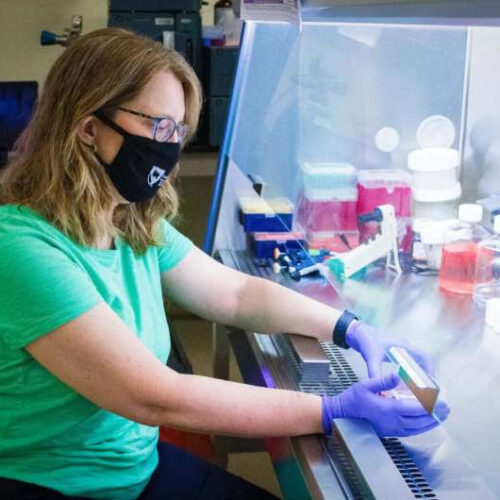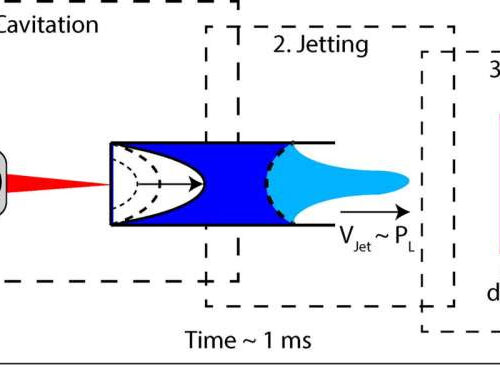Research finds that the cellular assembly line that produces proteins can stall with age, triggering a snowball effect that increases the output of misfolded proteins. In humans, clumps of misfolded proteins contribute to age-linked Alzheimer’s and Parkinson’s diseases. Aging leads to a decline in cellular fitness and loss of optimal protein function. Many age-related ailments,...
Nervous system consequences of COVID-19
Although severe acute respiratory syndrome coronavirus 2 (SARS-CoV-2) is considered a respiratory pathogen, myriad neurologic complications—including confusion, stroke, and neuromuscular disorders—manifest during acute COVID-19. Furthermore, maladies such as impaired concentration, headache, sensory disturbances, depression, and even psychosis may persist for months after infection, as part of a constellation of symptoms now called Long Covid. Even...
Motor proteins haul precious cargo in neurons. How can we control their movement?
UNIVERSITY AT BUFFALO BUFFALO, N.Y. — Inside neurons, motor proteins haul precious cargo, moving essential goods along thread-like roadways called microtubule tracks. This miniature highway system is vital for keeping neurons healthy: When traffic is flowing well, critical materials are able to reach distant areas of the cells where they’re needed. When the system breaks...
New findings for the function of tau in neurodegenerative disease
by Buck Institute for Research on Aging Tau interactome maps synaptic and mitochondrial processes associated with neurodegeneration. Credit: The Buck Institute for Research on Aging Utilizing cutting-edge proteomics, researchers at the Buck Institute and elsewhere have mapped the “tau interactome” uncovering new findings about the role of tau in neurodegenerative disease. Publishing in Cell, scientists found that...
Old neurons can block neurogenesis in mice
by Cell Press Thisis a high-resolution image of the large number of new neurons being produced (in red) in the hippocampus of middle-aged mice, treated with the drug that ablates senescent neural stem cells in the stem cell niche. Credit: Michael Fatt Destroying senescent cells in the aging stem cell niche enhances hippocampal neurogenesis and...
Study could explain why Parkinson’s drug improves, then diminishes quality of life
by University of California, Irvine “Although L-dopa remains the gold standard for Parkinson’s treatment, as the disease progresses, efficacy decreases, requiring higher and more frequent doses, which increases the risk of dyskinesia,” says the study’s co-corresponding author Amal Alachkar, Ph.D., associate professor of teaching in UCI’s Department of Pharmaceutical Sciences. “Our study indicates that L-dopa...
Investigational cancer drug mimics beneficial effects of fasting in mice
by Julia Evangelou Strait, Washington University School of Medicine in St. Louis An investigational cancer drug that starves tumors of their energy supply also shows evidence of improving whole body metabolism, according to a new study in mice from Washington University School of Medicine in St. Louis. Shown are sections of liver from mice on...
A cure for Alzheimer’s is taking longer than expected; here’s why
by Carnegie Mellon University, Department of Chemical Engineering Anne Robinson, head of Carnegie Mellon’s Chemical Engineering Department, conducts research in her lab. Credit: Carnegie Mellon Chemical Engineering In her latest research paper, published in the Journal of Molecular Neuroscience, Anne Robinson, Head of Carnegie Mellon’s Department of Chemical Engineering, explains why understanding the progression of neurodegeneration...
Needle-free injection evolves toward a highly precise, safe and low-waste technology
by University of Twente Graphical abstract. Credit: DOI: 10.1016/j.addr.2021.114109 Fear of needles is, for part of the population, the main reason for not getting a COVID-19 vaccine. That fear is demonstrated by the fact that needleless techniques have been in development for more than 150 years. A new technology, developed by David Fernandez Rivas and...
New high-throughput method greatly expands view of how mutations impact cells
by Tom Ulrich, Broad Institute of MIT and Harvard Credit: DOI: 10.1038/s41587-021-01160-7 There are millions of mutations and other genetic variations in cancer. Understanding which of these mutations is an impactful tumor “driver” compared to an innocuous “passenger,” and what each of the drivers does to the cancer cell, however, has been a challenging undertaking....







